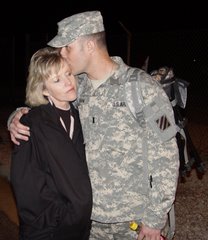Department of the Army Regulations
While the regulations governing the order of the spur are set by each cavalry commander (and so do not appear in the Army Regulation governing wear and appearance of uniforms and insignia), the practice falls under what the Army officially recognizes as a tradition. The following is from Field Manual 7-21.13 (The Soldier's Guide, dated 15 OCT 2003):
TRADITIONS
4-25. Tradition is a customary pattern of thought, action, or behavior help by an identifiable group of people. It is information, beliefs, and customs handed down by word of mouth or by example from one generation to another without written instruction. Our military traditions are really the "Army Way" of doing and thinking. An interesting thing about traditions is that many of our Army traditions started out as something quite different from what they are now.
4-26. Military tradition is an interesting and often amusing subject. It gives a Soldier a feeling of pride to understand just why we do things the way we do. Traditions are expressed in the things we do, the uniform we wear, and the things we say. Many of the words we use in the Army are unique and have been added to our vocabulary from different parts of the world and at different times in history.
4-27. Army traditions are the things that everyone in the Army does, everywhere. Unit traditions are the unique things that you do in your unit that other units may or may not do. Some unit traditions are—
Ceremonial duties. Soldiers of the Old Guard, the 3d U.S. Infantry, have been
Sentinels of the Tomb of the Unknown Soldier since 1948.
The green berets of the Army's Special Forces.
Airborne units’ maroon beret.
Cavalry units’ spurs and hats. [Bold added]
Special designations (authorized unit nicknames) such as Cottonbalers, the 7th Infantry Regiment.
Distinctive items of clothing worn in your unit such as headgear, belt buckles, and tankers' boots.
The promotion party.
Unit mottoes such as "Victory!" or "Send me!"
"Hooah!" This informal but always understood sound is less a word than an audible affirmation of the warrior ethos. The Soldier that utters that sound understands his task and will not quit until it is completed. That sound means Soldiers are ready and willing to accomplish the mission at hand.
Saturday, March 1, 2008
Subscribe to:
Post Comments (Atom)





No comments:
Post a Comment